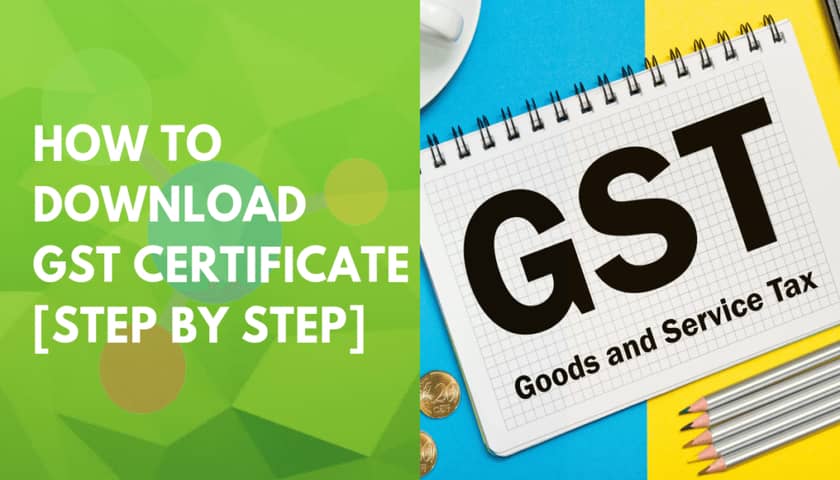What is GST?
The good and services tax (GST) is a value-added tax that is levied on the supply of most goods and services sold for domestic consumption. GST is a form of Indirect tax that has replaced several Indirect Taxes in India. GST is often defined as a “comprehensive, multi-stage, destination-based tax that’s levied on every value addition.”
GST is technologically driven. Activities such as registration, return filing, applications for refund, and response to notice are required to be done on the GST Portal, hence accelerating the processes.
1. Multi-stage
In this stage, the goods go through along its supply chain via a variety of hands that is from manufacturer to final sale to the customer.
This stage involves:
- Purchase of raw materials
- Production or manufacturing
- warehousing of finished goods
- Selling the goods to the wholesaler
- Sale of the item to the retailer
- Selling the product to the customer
GST is levied on each of the above stages and hence makes it a multi-stage tax.
2. Value Addition
In this stage, GST is levied on the value additions, which means that the monetary values added at each stage (mentioned above) to achieve the final sale to the end customer.
3. Destination-Based
Let’s take one example, goods are manufactured in West Bengal and then sold to the final customer in Delhi. Since GST is levied at the point of consumption, hence the entire tax revenue will go to Delhi and not West Bengal.
What is GST Registration Certificate?
Businesses with a turnover above Rs 20 lakh are required to register for GST. Some special businesses also need to register for GST. Each registered taxpayer is issued a GST registration certificate in Form GST REG-06. You can download the registration certificate online via the GST India Portal.
Importance of GST Registration Certificate
- GST is an Indirect Tax that was designed specifically to bring indirect taxation under one place. It has removed the cascading effect on the sale of products and services. This removal has influenced the cost of goods. As the GST regime has terminated the tax on tax (cascading effect), the cost of goods has also decreased.
- Earlier in the VAT structure, any business having a turnover (in most states) of more than Rs 5 lakhs were supposed to pay VAT. Also, service tax was exempted from service providers who had a turnover of less than Rs 10 lakh. Because of GST, this threshold has been increased to Rs 20 lakh that has exempted several small traders and service providers.
- With the introduction of the GST Registration Certificate, small businesses are getting an option to lower taxes by utilizing the composition scheme. This has moved down the tax and compliance burden on several small businesses.
- The entire procedure of GST, from registration to filing returns can be made online very easily. This has enabled the start-up companies to get exempted from making different registrations like VAT, excise, and service tax.
- Under GST, the number of returns to be filed has come down. Hence, there is only one unified return to be filed.
- Before GST came into action, goods supplied through e-commerce sector was not defined since it had variable VAT laws. But GST has clearly mapped out the provisions applicable to the e-commerce sectors and as these are applicable all over India, there wouldn’t be any more complications related to the interstate movement of goods.
- GST has reduced the restrictions on inter-state movement of goods. Under the GST regime, warehouse operators and e-commerce sectors have shown interest in fixing their warehouses at strategic locations like Nagpur, rather than other cities on their delivery route. Hence, a reduction in unnecessary logistics costs has increased profits for businesses involved in the supply of goods via transportation.
- Certain industries in India such as textile and construction were severely unregulated and unorganized in the pre-GST era. Owing to GST, provisions have been made for online compliances and payments, and for availing of input credit only when the supplier has accepted the amount. This has led to accountability and regulations for these industries.
How to Apply for GST Registration Certificate?
- Go to the GST India Portal.
- Click on the ‘Registration’ button under the ‘Services’ tab and then click on ‘New Registration’.
- For the 1st part of the registration process, click on ‘taxpayer’ from the drop-down menu of ‘I am a’
- Now, fill the GST REG-01 by entering basic details like the legal name of your business, state, email address, mobile number, and PAN Card.
- Verify the information by entering the one-time password sent to your mobile number and email ID.
- Now click on the ‘Proceed’ button. Note down the Temporary Reference Number (TRN) after the verification process is over.
- For the 2nd part of the registration process, log in to your account using your TRN number. Enter the CAPTCHA code and complete OTP verification sent to your registered mobile number and email ID.
- You will now be redirected to the GST Registration page. Fill in details like the name of your business, PAN, name of the state you are registering your business, date of commencement of your business, and you also have to mention if you have any existing registrations.
- Now, you have to submit details of up to 10 partners of your business. In the case of a proprietorship firm, submit the details of the proprietor. Also, you need to provide personal details, Director Identification Number (DIN), PAN, and Aadhaar number.
- Next, submit details of that person you have authorized to file GST returns.
- Mention the principal place of business, address, official contact details, and the bank account details of the company.
- Upload the necessary documents depending upon the type of business you are registering.
- Next, click on ‘Save’ and continue’. After submitting the application, you are required to sign in digitally.
- Click on ‘Submit’ to save your details.
- Once you submit, you will receive an Application Reference Number (ARN) through email or SMS to confirm your registration.
Required Documents for GST Registration
- PAN card of the applicant.
- Partnership deed or incorporation certificate
- PAN cards/voter IDS/Aadhaar cards of partners.
- Address proof of the business in the form of an electricity bill, rent or lease agreement, or for an SEZ, documents issued by the government.
- Bank account statement of the business, or individual
How to Download GST Registration Certificate?
Downloading GST Registration Certificate is pretty easy. Follow the steps below to download GST Registration Certificate.
- Open the GST India Portal https://www.gst.gov.in/
- Click on the Login button to access the username and password page
- Enter the correct ‘Username’ and ‘Password’ along with the captcha and click ‘Login’.
- Go to ‘Services> User Services> View/Download Certificate
- Click on the Download button
The certificate consists of all the details related to each business. On the primary page, basic details like name, address, and date of registration of the business are displayed. The second page displays the ‘Annexure A’ that comprises details of any additional place of business. The third page is ‘Annexure B’ that contains information about the Person in Charge of the business.
GST registration certificates issued to regular taxpayers do not expire as long as it is cancelled by the GST authority. But in case of casual taxable person GST registration or non-resident taxable person GST registration, the validity is restricted to a maximum of 90 days. It can be extended or renewed at the end of the validity term.
GST Invoice Format (Excel)
Follow the below steps to create GST invoice using Microsoft Excel:
- Open Microsoft Excel and click on the ‘File’ tab. Now, select ‘New’ from the dropdown menu. Then, double click on the ‘Blank WorkBook’ to open a new excel sheet. You can remove the gridlines for preparing the invoice by clicking on the ‘View’ tab. Uncheck the gridlines in the ‘Show/Hide’ section.
- In the blank worksheet, click on the ‘Insert’ tab to upload your company logo. Set the header for the document as ‘Tax Invoice’.
- Next, enter your business details like business name, address, zip code, and GSTIN.
- After entering your business details, move on to the ‘Bill to’ section that contains the details of your customer. Write ‘Bill to’ just below your business details and enter customer information like the name of the business of your customer, address, zip code, GSTIN/UIN.
- Add some other details such as the purchase order number (PO) if any, invoice number, and invoice due date. You can use the formula =TODAY() function in the invoice date section as it uses the current day’s date.
Add goods or services details section which includes goods/service details, price, quantity, discount % (if any), and tax applicable if any. At the end of the invoice, provide your bank details, business PAN, and space for your digital signatures.
Download GST Invoice in Excel Format
GST Invoice Format (Word)
Follow the below steps to create GST invoice using Microsoft Word:
- Open Microsoft Word to get the blank word document. Click on the ‘Insert’ tab and then click on ‘Table’ from the choice window. From the dropdown menu, select ‘Insert Tables’ and change the number of rows and columns as per your requirements.
- You can adjust the size of each column according to the details included in a specific column. Click on the ‘Layout’ tab to change the dimensions in the ‘Width’ section.
- Enter your business details like business name, address, zip code, and GSTIN. Also, add other details such as the purchase order number (PO), invoice number, and invoice due date.
- Now, enter customer information like name of the business of your customer, address, zip code, GSTIN/UIN.
- Below the customer details, add a section that describes the goods or services sold, HSN/SAC codes, quantity, price, their total amount, and GST rates as applicable. At the end of the invoice, provide your bank details such as bank name, account number, IFSC code, etc.
At the end of the invoice, leave a space for the signature of your business’s authorized signature.
Download GST Invoice in Word Format
Admin
Latest posts by Admin (see all)
- Things to Look for in a Jet Charter Company Before Renting a Private Jet - August 15, 2020
- 5 Best Salesforce Development Tools for Salesforce Devops Projects? - July 8, 2020
- Most Common Mistakes When Choosing A Nursing Home - June 16, 2020





Wow this is quite very good information. This post is very helpful and time saving about GST. Thanks Man.